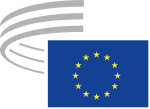The ISPD Protocol & Diplomacy (founded 2008 as The International School of Protocol and Diplomacy) is part of the ISPD Group and an academic institution solely dedicated to research, education, training and consultancy in International Protocol, Soft Diplomacy, Business Protocol, Etiquette, Official Events, Cross-Cultural Intelligence, Strategic Communication and Corporate Diplomacy. As the word “School” is not summarising properly all ISPD related activities the wording was changed and the group does not use the word “School” anymore.
The ISPD combines fields like Protocol, Diplomacy, Soft Diplomatic Skills, Security, Corporate Diplomacy, etc. in order to bring clients and course participants a unique range of study programmes designed and developed by academics from multicultural and interdisciplinary backgrounds. Although born in Brussels, Belgium, the ISPD has representative offices worldwide.
Since the inception in 2008, the ISPD Protocol & Diplomacy has trained over 1200 professionals, including ambassadors, chiefs of protocol and embassy personnel across 104 countries. In addition, the ISPD Protocol & Diplomacy works with more than 60 internationally known experts like the Former Minister for Foreign Affairs of Austria Dr Karin Kneissl; H.E. Dr Luis Ritto former EU Ambassador to the Holy See, Order of Malta, FAO; Captain José Paulo Lucena, Head of Security, Safety and Environment Department at the Portuguese Navy General Inspection; Thomas Sladko, former Deputy Head of Protocol of the Austrian Federal Chancellery; Vazil Hudák, Vice President of the European Investment Bank; Pierre Jirikoff, Senior Advisor of Protocol at the Chamber of Representatives of Belgium; Baron Jacques de Cattier d'Yves, former Protocol Director of the Ministry of Defense; Phillipa Lawrence, former Chief of Protocol of the UN, among many others. ISPD's primary language of instruction is English, but it also provides lectures on other languages on demand. Its method of teaching is based on both face2face training and online learning platform for students in distant parts of the world.












